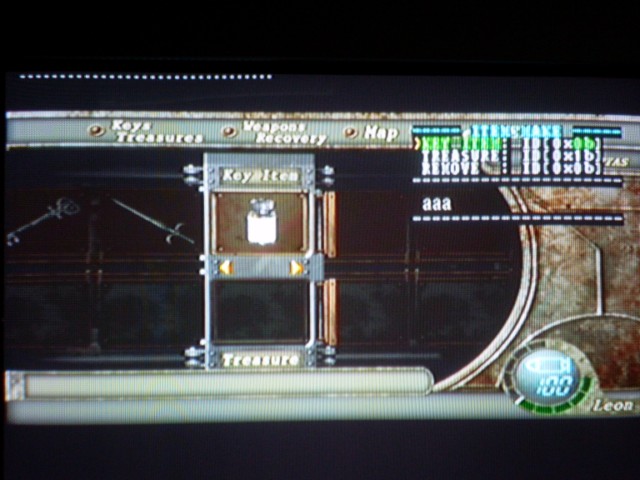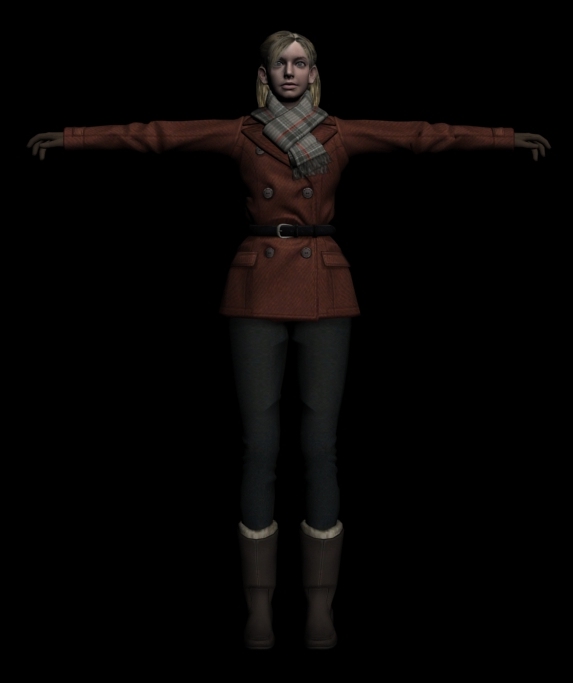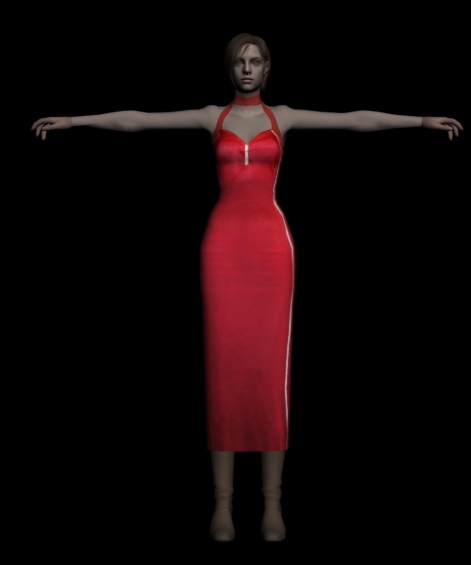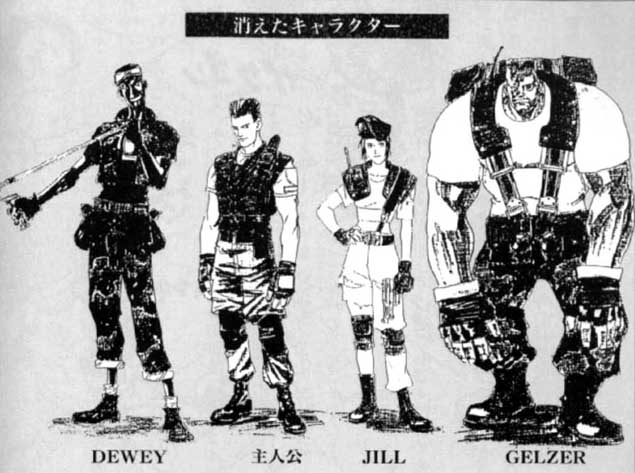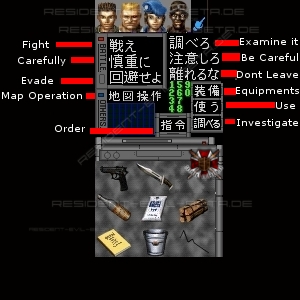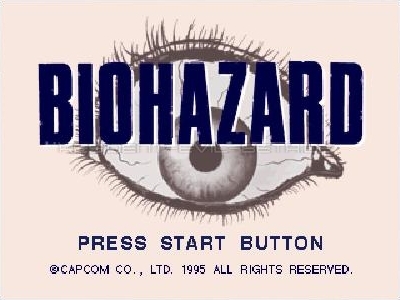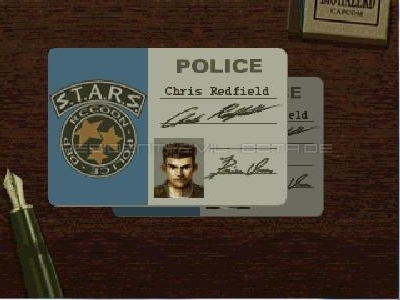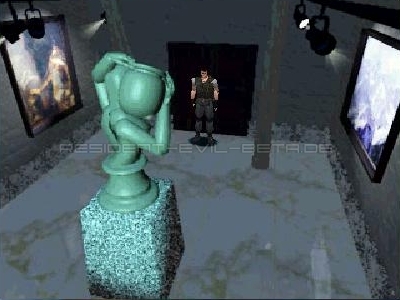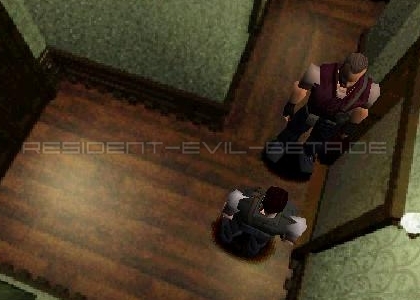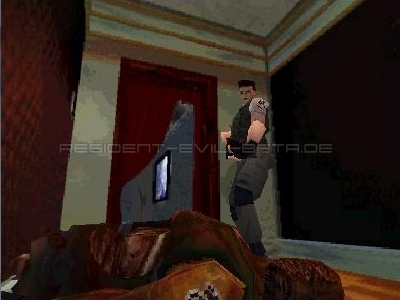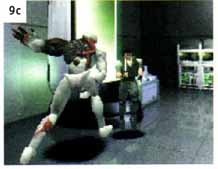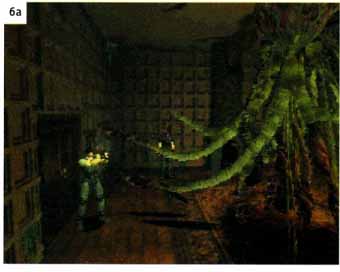![]()
Resident evil 4 is probably the console game with the most tormented development cycle of all time. Originally scheduled for Playstation 2 in 2001, the Capcom game had to wait four years and as many betas to take the final form. The first version, as it is well known, became Devil May Cry because the build was deemed too action-oriented to be part of the series. Nevertheless, the trappings of the Resident Evil saga were plentiful, from the fixed camera to the haunting environments.
Gamers were shocked by the announcement that Resident Evil 4 would be exclusively on the Gamecube. The first Gamecube beta was presented at TGS 2002, showing Leon in a strange metallic structure (later confirmed to be an Airship) fighting a bizarre fog creature. The few words spoken in the trailer were about the Cradle of the Progenitor Virus, and apparently the story centered on the assault of our heroes to Umbrella Europe. Moreover, Leon was probably infected and wielded odd supernatural powers.
The following year (2003) Resident Evil 4 was shown again. This version had different features and a new emphasis on the supernatural that seemed to bring the game closer to Silent Hill. In this new trailer, Leon (who still had some strange power) was inside a mansion infested with some strange presence, notably a strong creature with a hook. An extended video of this beta is featured on Biohazard 4 Secret DVD, where we can also see the Killers Armors still present in the final game on Ashley’s stage.
Although this last beta seemed to be the most promising and polished version yet, Capcom decided to start over again. The third beta, which according to the programmers featured zombies, was not even presented to the public. Finally, the Resident Evil 4 we are most familiar with was shown at E3 2004. The Resident Evil 4 Unseen Saga didn’t end there, though. After about a year of the Gamecube release, Resident Evil 4 was ported to the Playstation 2 with a few new locations.
Moreover, the trial version of the Gamecube version was hacked, revealing the names of many rooms of the various betas and really cool items like the Optical Camo and the Infrared Goggles. It seems that the programmers were still making changes to the game until the very end of development. Knowing Capcom, maybe even the setting of the last chapter of Umbrella Chronicles is lifted from the scrapped zombie version of Resident Evil 4.
Thanks to Robert Seddon for the contribution and to Jay for the english corrections!
In Formeragent‘s Youtube channel we can see an interesting video with beta comparisons.
In November 2009, Tyrant of resident-evil-beta.de discovered a pre-release version of Resident Evil 4. These are the main differences from the final game:
- You can use the silencer on the hand gun and on the tmp
- The merchant menu is very different
- You can contact Hunningham, but there is no pic of her
- You can play only the first three levels
- The screen “end of level xx” is different
- Some voices from the enemies are different
- Saddler’s voice is different
- All documents are missing
- If you pick up an item,the sound is different
- the debug menu is fully unlocked
A pic of a woman found extracting the files inside the beta. Probably just a placeholder.
Unused item
Also, Enrico Marini of the THIA forum found the beta polygonal model of Ashley and an interesting placeholder, Jill dressed with the Ada dress, in the retail version of Resident Evil 4 :
More info from DCodes7:
Resident evil 4 went through a long development cycle. Multiple prototypes were created; officially only two of those prototypes were shown to public. Resident evil 4’s development started in 1998 which involved taking a trip to Spain to study castle architecture. In December 1999 it was hinted that RE4 was in development, however the game wasn’t officially announced until 2001.
When resident evil 4 was shown to the public for the first time it was announced that the game was being developed by Capcom’s Studio 4 for the Nintendo GameCube as part of five game line up that was exclusively developed for the GameCube.
Build 1 – Fog Version
The first build that was shown to the public, nicknamed the fog version, shows Leon S. Kennedy infiltrating umbrella Europe while being chased by a fog creature. This build was shown at TGS (Tokyo Game Show) 2002. The trailer for this build hinted that Leon could have been possessed and infected by the progenitor virus. The story involved the origins of the progenitor virus – hence what is said in the trailer: “the cradle of the progenitor virus.”

EGM (Electronic Gaming monthly) interviewed director Hideki Kamiya; this interview revealed that there was a super natural ability locked inside Leon’s Left arm and a notion to an unrevealed female character! You can read the entire interview to the left of this paragraph.
In the end, after the first showing of this build, it was scrapped; because “it was too much of a departure from the resident evil series.” Eventually this build of the game evolved into what is known today as Devil May Cry.
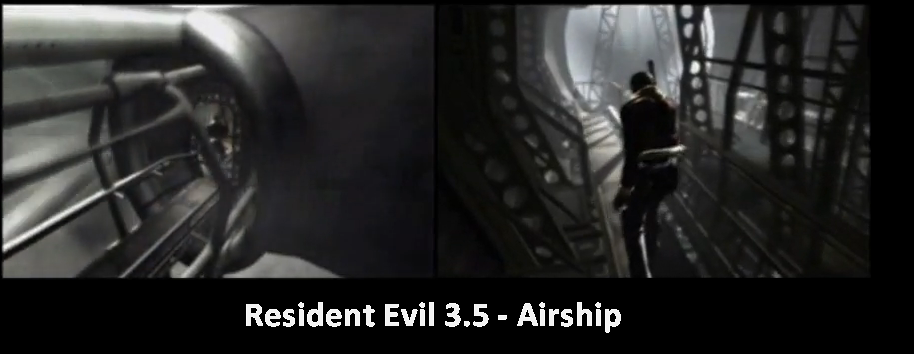
In early 2006 it was discovered – in the debug menu on an early trial demo of resident evil 4 – that the large metal structure that is shown in the fog trailer was an airship. Only the names of the levels remained. To see all of the 3.5’s level names (Fog & Hook Man versions) click on the links below.
http://www.the-horror.com/index.php?id=features&s=re4demos&p=10
http://www.the-horror.com/index.php?id=features&s=re4demos&p=11
http://www.the-horror.com/index.php?id=features&s=re4demos&p=12
Build 2 – Hook Man
Later in 2002 resident evil 4 was revealed to the public once again at E3 2002, showing a completely different game from earlier that year at TGS. This build of the game Showcases Leon S. Kennedy in a mansion while being attacked by possessed suits of armor, possessed dolls, and killer hook man ghosts; this version of the game concentrated on the super natural and puzzle solving.
The following year in 2003, cube magazine published a six page article titled “Diary of a Mad Man.” This six page article puts build 2’s story months after the Raccoon City (Resident Evil 2) and Rockford island (code veronica) incidents. You can read all six pages of the article below this paragraph.
Thanks to the 5th survivor on the THIA forum for posting these articles!
- Cube Magazine – Page 1
- Cube Magazine – Page 2
- Cube Magazine – Page 3
- Cube Magazine – Page 4
- Cube Magazine – Page 5
- Cube Magazine – Page 6
In the end the Hook man version of Resident Evil 4 was scrapped because it was “too paranormal for the resident evil plot.” This build of Resident Evil 4 evolved into the game Haunting Ground. In 2005 a five minute game play video of build 2 was released with the biohazard 4 (Resident Evil 4) Secret DVD.
Part 1 Conclusion:
Resident Evil 4 was scrapped, evolved, only to be scrapped again. Two prototypes evolved into two games and one of those games evolved into a franchise. Resident Evil 4’s development didn’t stop there; the game continued to evolve and change as it was being developed. Though Resident Evil 4 remained roughly the same – gameplay wise – the items, collectables, enemies, and the sounds of the guns were changed until the games release. In Part 2 of the analysis I will explain and point out changes that Resident evil 4 went through based on the trials and demo’s that promoted the game.
![]() [spoiler /Clicca qui per la versione in Italiano/ /Nascondi la versione in Italiano/]Resident evil 4 è probabilmente il gioco per console con lo sviluppo più tormentato di tutti i tempi. Originariamente previsto per Playstation 2 nel 2001, il titolo Capcom ha dovuto attendere ben 4 anni e altrettante beta per assumere la forma definitiva. La prima versione è diventata come è noto Devil May Cry, poiché ritenuta troppo action per far parte della serie. Nonostante ciò, rimangono evidenti i debiti alla saga horror all’interno del gioco, dalle inquadrature alle ambientazioni.
[spoiler /Clicca qui per la versione in Italiano/ /Nascondi la versione in Italiano/]Resident evil 4 è probabilmente il gioco per console con lo sviluppo più tormentato di tutti i tempi. Originariamente previsto per Playstation 2 nel 2001, il titolo Capcom ha dovuto attendere ben 4 anni e altrettante beta per assumere la forma definitiva. La prima versione è diventata come è noto Devil May Cry, poiché ritenuta troppo action per far parte della serie. Nonostante ciò, rimangono evidenti i debiti alla saga horror all’interno del gioco, dalle inquadrature alle ambientazioni.
Poi è la volta dell’annuncio shock di Resident evil 4 esclusiva gamecube, con la presentazione della nuova versione al TGS 2002, che vede Leon all’interno di una strana struttura alla prese con un bizzarro essere incorporeo. Le poche parole presenti all’interno del trailer parlano della culla del progenitor virus, e a quanto sembra la storia era incentrata nell’assalto dei nostri eroi ad umbrella europe.
L’anno successivo (2003) il titolo viene presentato nuovamente, ma stavolta evidenziando caratteristiche differenti, che sembravano avvicinare la saga a Silent hill, con una nuova enfasi sul soprannaturale e sull’horror psicologico. Di questa versione, di cui il trailer originale mostrava solamente Leon all’interno di una magione infestata da strane presenze, in particolare da un mostro dotato di uncino, esiste anche un filmato esteso all’interno del biohazard secret dvd.
Benché si trattava sicuramente la più curata e promettente delle beta, Capcom decide nuovamente di cambiare direzione nello sviluppo, ma il nuovo titolo, che a sentire i programmatori aveva di nuovo gli zombie, non viene neanche mostrato al pubblico. Finalmente, all’e3 del 2004 viene esibita la versione definitiva, o almeno cosi si credeva. Dopo circa un anno infatti Resident Evil 4 viene convertito per Playstation 2 con delle aree aggiuntive rispetto alle release gamecube. E sicuramente ancora diverso materiale del Resident Evil 4 Project è rimasto sconosciuto al pubblico. Lo vedremo in Resident evil Wii?[/spoiler]
Images:
Videos:


